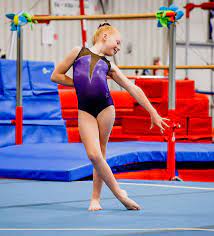Ask any parent what they want for their child, and “confidence,” “cooperation,” and “resilience” are likely near the top of the list. But how do kids actually learn these traits? More often than not, it’s through shared experiences—especially in structured, active environments. That’s why gymnastics for kids plays such a powerful role in social development.
This article explores how gymnastics shapes young minds beyond physical movement, building teamwork, respect, empathy, and self-control—all crucial for success both in school and in life.
Why Social Learning Matters in Early Childhood
Social skills aren’t just about playing nicely. They influence how kids manage friendships, follow instructions, navigate group settings, and resolve conflict. These skills are formed early and shaped by real-world experiences.
Children who learn how to share, listen, lead, and take turns are better prepared to:
- Work in classroom groups
- Handle peer pressure
- Participate in sports and school events
- Build healthy friendships
And while parents and teachers play a role, one of the most effective ways to build these skills is through movement-based group activities—especially structured ones like gymnastics for kids.
Gymnastics Is More Social Than You Think
Although gymnastics can seem like a solo sport, it’s incredibly social by nature. Kids train in small groups, wait their turn on apparatus, cheer each other on, and often learn new skills side-by-side.
In each class, children naturally:
- Encourage their peers during difficult drills
- Learn to wait without interrupting
- Offer help and celebrate others’ progress
- Develop mutual respect for their coaches and classmates
Unlike competitive team sports that focus on winning or scoring, gymnastics offers a cooperative environment where personal bests are celebrated—and every child has space to shine. It’s low-pressure, yet deeply rewarding.
Taking Turns Builds Patience and Self-Regulation
Gymnastics classes are structured. Kids often rotate through stations—beam, bars, vault, and floor. And this means learning to wait. It’s not easy at first, especially for younger kids bursting with energy.
But week after week, something shifts. Kids start to:
- Wait their turn without being prompted
- Listen closely to others’ feedback
- Respect personal space on equipment
- Recognise their own progress without constant comparison
These are subtle but powerful developments. And they matter just as much as mastering a cartwheel.
In fact, this kind of delayed gratification is directly linked to better outcomes in school and social life. Kids who can control impulses are more likely to concentrate, finish homework, and resolve conflict calmly.
Peer Support: How Encouragement Sparks Confidence
In gymnastics classes, kids are often encouraged to support one another. Whether it’s a high five after a tricky move or clapping for someone nailing a routine, these moments help kids feel part of something bigger.
They also develop empathy.
When kids watch a classmate struggle with the same skill they struggled with last week, they start to relate. They understand effort. They notice the small wins. And most importantly, they learn how to uplift others.
Over time, this kind of positive reinforcement becomes instinctive—and shows up in school, at home, and even in sports like gymnastics for kids.
Respect and Listening: Essential Team Skills
Every gymnastics session includes instruction. Kids are asked to focus, follow multi-step directions, and respond to coaching with action, not attitude.
In doing so, they practise:
- Active listening
- Following rules
- Accepting guidance
- Giving space to others without dominance
These experiences create respectful communicators—children who are comfortable listening as well as speaking. That’s a major asset in any group setting, whether it’s the classroom, the sports field, or future work environments.
The Confidence to Connect
Gymnastics also helps shy or reserved children open up. Because it’s not competitive in the traditional sense, kids are free to progress at their own pace. There’s less fear of failure—and more room for fun.
This welcoming atmosphere builds:
- Emotional safety in group settings
- Trust in adults and authority figures
- Confidence in expressing needs or asking questions
All of which support stronger communication skills.
For many children, gymnastics becomes their first real “community” outside home or school. And that early sense of belonging can influence how they approach new social groups later in life.
Learning Through Laughter and Movement
Let’s not overlook the most powerful element of social learning in gymnastics: joy. Kids bond most easily when they’re having fun. And gymnastics is packed with laughter, silly warm-ups, partner stretches, and playful challenges.
Whether it’s trying a new skill or falling over in a foam pit, the shared experience creates stories, giggles, and memories. These connections help children form lasting friendships—and develop a positive attitude toward social interaction in general.
That positive mindset can influence everything from school group work to future sporting involvement like gymnastics for kids.
Backed by Research
It’s not just parents and coaches saying this. Studies support the connection between structured movement programs and social development. According to this study published by Frontiers in Psychology, physical activity programs that include social interaction significantly improve children’s self-control, cooperation, and emotional understanding.
That makes gymnastics a strong choice for families who want to support their child’s holistic growth.
Final Thought
Gymnastics for kids does more than teach balance and coordination—it builds social confidence, emotional maturity, and strong peer relationships. The mat, the beam, and the vault are all just tools. What really matters is the learning happening between the moves.
So if you’re looking for an activity that teaches teamwork, patience, and positive communication—without the pressure of traditional competition—this might be it.
Group sports like gymnastics for kids offer a place for children to move, grow, and connect. And in today’s fast-paced, screen-filled world, that kind of genuine connection is more valuable than ever.

